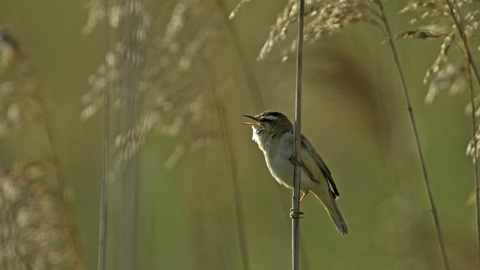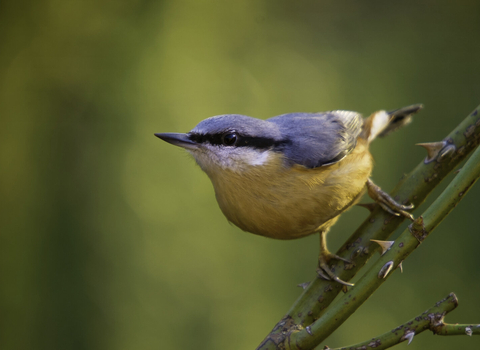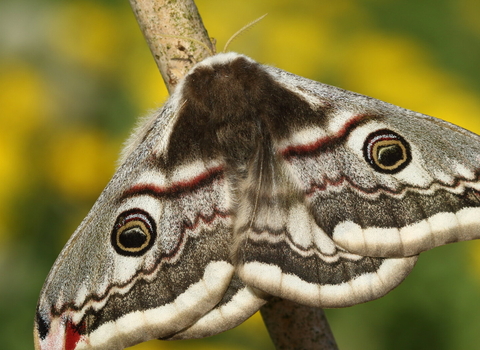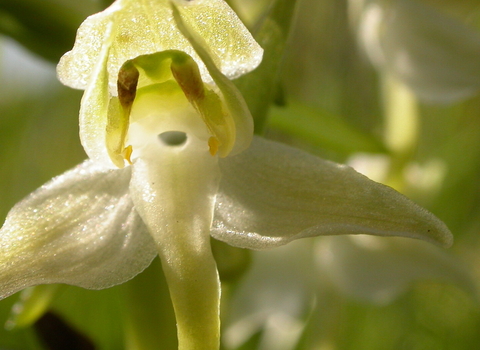
Sedge warbler (Acrocephalus schoenobaenus) adult singing in reedbed. Cambridgeshire. - Chris Gomersall/2020VISION
Rhos Glyn-yr-Helyg, Gorsgoch, Ceredigion
Location
Know before you go
Dogs
When to visit
Amseroedd agor
Open access reserve.Amser gorau i ymweld
Spring and summerAm dan y warchodfa
Much of the southern half of the site is wet Purple Moor Grass with Sharp-flowered and Soft Rush. Among this sward are large amounts of Devil’s-bit Scabious (7-9) (the food plant of Marsh Fritillary butterfly (5-7)), Sneezewort (7-10), and Whorled Caraway (6-8). By contrast, the northern portion is a drier grassland, rich in flowering plants such as Black Knapweed (6-9), Cat’s-ear (6-10), Eyebright (5-10), and Lousewort (4-6), with Dyer’s Greenweed (6-10), and some Heather (8-10). Scarce species include Moonwort (6-8), and Frog Orchid (6-8). Since the site was acquired by the Trust a total of 240 higher plant species have been recorded.
Breeding birds include Willow Tit, Whinchat, Sedge Warbler and Grasshopper Warbler. Common Snipe and Woodcock use the site in winter.
The interest of the site is enhanced by the presence of depressions thought to be remnants of glacial features known as pingos. These hollows support a rich mire community, including Bog Asphodel, Bog Mosses, Bottle Sedge, Cross-leaved Heath, and Marsh Cinquefoil. Thirty four species of moss and 10 species of liverwort have been recorded.
Small Red Damselfly (6-8) and Keeled Skimmer occur around these basin mires while Banded Demoiselle occurs on the adjacent Afon Grannell, which is also used by Otters. The site is good for invertebrates with 18 species of butterfly, including a small colony of Marsh Fritillary butterflies and the Forester Moth recorded.



